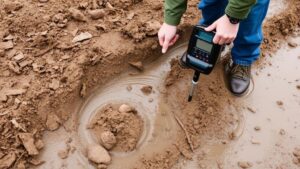Techniques for Breaking Down Multilingual Treasure Clues
Techniques for Breaking Down Multilingual Treasure Clues
Multilingual treasure hunting, whether for puzzles in literature, video games, or actual scavenger hunts, presents a unique challenge: deciphering clues that may be composed in multiple languages. The techniques outlined in this article will provide readers with strategies for effectively breaking down these clues to enhance their deciphering prowess and uncover hidden treasures.
Understanding Context and Cultural Nuances
One critical technique in tackling multilingual clues is understanding the contextual backdrop of the languages involved. Language is inherently tied to culture, and thus, clues may carry connotations that are not readily apparent to those unfamiliar with that culture.
For example, consider a clue that uses a Spanish phrase such as No hay mal que por bien no venga. While this translates to Every cloud has a silver lining, the implication in a cultural context may relate to optimism during challenging times. Treasure hunters should research cultural idioms and proverbs, as this knowledge can provide insight into the hidden meanings behind the clues.
Employing Translation Tools Effectively
Modern technology has made translation more accessible than ever, but not all tools are created equal. Engaging in careful translation requires critical evaluation of the tools utilized. Key translation options include:
- Online Translators: Tools like Google Translate can offer quick translations but may miss context. Always cross-reference results with native speakers or trusted language databases.
- Translation Apps: Applications such as Duolingo or Babbel allow users to expand their language skills over time, enhancing their understanding of potential clues.
- Bilingual Dictionaries: A good, traditional bilingual dictionary can help clarify nuanced meanings and usage for more accurate interpretations.
A practical case study can illustrate the effectiveness of these tools. In a treasure hunt at an international festival, participants faced a clue in French: Cherchez et vous trouverez. The literal translation is Search and you shall find. Utilizing an online translator alone might have led participants to stop there; however, understandings of French culture, including the reference to the famous saying from the Bible, allowed them to interpret not just the words but the action that needed to be taken–searching thoroughly rather than superficially.
Recognizing Linguistic Patterns
Languages often feature patterns that can be strategically leveraged to untangle multilingual clues. For example, many languages share Latin roots, and recognizing familiar prefixes or suffixes can expedite the process of understanding a clue. Consider the words bio- (life) and logy (study) which appear in various languages relating to life sciences.
Also, multilingual clues may rely on wordplay or puns that carry over into other languages. A classic example is the use of the word treasure in various languages where the phonetic similarity can unlock a broader understanding of the space sought or the clues provided. For example, understanding that tesoro (Spanish for treasure) and trésor (French) might play into the geographical location or thematic elements of the hunt can be vital.
Incorporating Community Knowledge
Tapping into community resources is another powerful technique. Engaging with forums or groups dedicated to multilingual puzzles can provide insights you might not possess. Platforms like Reddit often host communities for multilingual enthusiasts and treasure hunters alike.
For example, if stuck on a clue involving a Mandarin term, seeking out a language enthusiast might illuminate cultural references that might otherwise go unnoticed. Also, collaboration can lead to brainstorming sessions that yield fresh perspectives and solutions. A notable instance involves a collaborative online puzzle, The Beale Ciphers, which saw participants from different backgrounds coming together to solve clues in English, Latin, and Spanish successfully.
Key Takeaways for Effective Decoding
Breaking down multilingual treasure clues requires an approach that blends cultural understanding, technological resources, recognition of linguistic patterns, and community collaboration. To successfully decode multilayered clues, keep the following strategies in mind:
- Research contextual and cultural references related to the languages involved.
- Use reliable translation tools, while understanding their limitations.
- Look for patterns and similarities between languages to aid in translation.
- Seek insights from language communities for obscure references and collaborative support.
By employing these techniques, treasure hunters can significantly enhance their ability to crack multilingual codes, ensuring they stay ahead in their quest for discovery.


